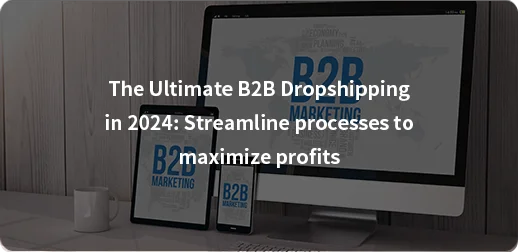Irrespective of your field of business, Key Performance Indicators or KPIs present businesses with the most reliable techniques to help measure and trace the advancements with regard to their targets.
An immeasurable lineup of KPIs is available to help businesses identify what they are performing correctly, what requires more input, and what needs critical observation.
In merchandise eCommerce, the domain pertaining to order fulfillment presents different kinds of opportunities for procedure enhancement, hence, KPIs can give the most distinct awareness with regard to that.
At Globallyfulfill, management of order fulfillment is a core element of our designed software solutions.
Our collaboration with customers across a wide range of the retail industry has presented to us how essential fulfillment enhancement is to whichever brand seeks to reduce expenses, boost revenue and scale the business.
We are aware that the sum total of KPIs accessible can be confusing. That’s why here, we shall discuss the nine most crucial order fulfillment KPIs.
Furnished with this information, businesses can observe areas that still require much input and areas that need adjustment as well as monitor outcomes to make sure there is progress moving forward.
In this article, we shall outline the best order fulfillment KPIs which all eCommerce businesses need to follow. Later we shall also discuss how outsourced dispensation and order fulfillment can assist in boosting your profit limits.
Order Fulfillment KPI: What Is It?
Nowadays, almost every manager is familiar with the phrase KPI. Key Performance Indicators, or KPIs, are a collection of crucial (key) indicators of progress toward a desired outcome.
KPIs are a type of KPI used in management practice to evaluate the numerous outcomes of an organization’s, division’s, and employees’ activities.
In other words, this demonstrates how the quality and quantity of resources (process) used, as well as the methods and environmental factors used to carry out the work, all influence the work’s outcome (output).
This enables us to evaluate how much we have accomplished a specific goal, either directly or indirectly.
How Do You Evaluate the Fulfillment of Orders?
Order fulfillment is the process of completing a sales order per the customer’s requirements and providing the items on schedule. There are six steps to it:
- Getting products from vendors
- Packaging and processing
- Shipping
- Delivery to clients
- Processing any necessary returns
Your company can compare its order fulfillment procedures to those of other similar businesses and historical performance by monitoring metrics connected to these steps.
What Order Fulfillment KPIs Should You Measure?
Hundreds of firms participate in surveys every year to learn which metrics they use and to classify them into the following five categories: capacity/quality, operational, financial, and customer.
The benchmarking study examines important performance indicators for warehousing and distribution.
According to a recent survey, businesses are beginning to measure operations rather than employee productivity. The top KPIs show that there is pressure to fulfill orders promptly and in the right quantities.
Businesses are planning for inventory and safety stock more frequently, paying attention to employee engagement and safety, and preserving connections with important suppliers.

Order-picking precision, warehouse capacity, and on-time delivery are important performance indicators that businesses monitor. While effectively managing stock and inventory, inventory management software can contribute to revenue growth and customer happiness.
What Determines the Efficacy of an Order Fulfillment KPI?
Effective activity helps maintain steady employment, raise the standard of services, and draw in new clients. As a result, companies should make every effort to improve the efficiency of the order fulfillment process. But how should one go about doing it? Where do you begin?
If you break it down into steps and carefully examine how it operates, you might find a way to make your order fulfillment process better.
However, you can find several characteristics that influence your order fulfillment process right here if you don’t want to or don’t have time to conduct the analysis.
You can assess your performance using some parameters. The effectiveness of logistics processes has been studied to improve them.
They discovered certain characteristics from the study that would help make the order fulfillment procedure more productive.
The delivery items must be delivered more quickly, transportation expenses must be kept to a minimum, costs must be cut, and the profitability and appeal of the company must all rise. However, the study has a flaw because you must assess numerous organizational aspects.
Putting all the indications together to generate the big picture is difficult. As a result, we have outlined some essential order fulfillment KPIs for organizations to take into account below.
Which are the Most Essential Order Fulfillment KIPs for Businesses?
Understanding how data and KPIs may give you insights into your operations and workflow is crucial for eCommerce businesses, which frequently operate on thin margins.
One aspect that is frequently disregarded but shouldn’t be is order fulfillment. The correct collection of KPIs can help retailers gain insightful knowledge and put strategies and improvements to work to help boost ROI.
eCommerce businesses can monitor and improve their order fulfillment procedures by using a variety of order management performance KPIs.
Here, we outline the important KPIs, their functions, significance, and advantages, as well as how you may use them in conjunction with every other part of your company to enhance your order fulfillment processes.
1. On-Time Shipment and Delivery
On-time shipment is one of the most important order management performance KPIs to monitor because 69% of customers are less inclined to shop in your business if you miss your delivery window.
It provides you with a comparison of orders that were shipped earlier or on the required date to all orders that were shipped.
By dividing the total number of orders shipped by the number of orders that were shipped early or on time, you may determine KPIs.
If you shipped 400 items in two days, but only 100 of them were delivered on time or earlier, your on-time shipment percentage would be 25% (100/400).
- Calculation: (Number of on-time deliveries / Total number of deliveries) x 100
To determine whether your customers’ packages are being delivered on time, you need to monitor your on-time shipping KPI.
If this KPI is too low, it indicates that there are delays in picking, packing, and delivering orders, and if you don’t fix the problem, you risk losing customers.

This KPI can be enhanced by automating the pick, pack, and ship cycle to ensure that orders are shipped out and in transit as quickly as possible.
2. Time for the Entire Order Cycle
Total order cycle time is one of the top order management performance KPIs you shouldn’t neglect because more and more clients are becoming accustomed to same-day and next-day deliveries.
It gives you an idea of how long it takes to deliver items to your customers’ doorsteps by measuring the average time it takes from the time a client orders an item until they receive their box.
Subtract the time the order was placed from the time the order was received to arrive at this KPI. After that, divide the figure by the total number of orders that were shipped.
- Calculation: (Total time taken to fulfill orders / Total number of orders)
Because it reveals how successfully your 3PL partners, warehouses, and carriers complete and transport customer orders, order cycle time is a useful KPI.
To reduce the time between order processing and delivery, you must address and resolve problems with your 3PL vendors and shipping companies.
You may enhance this fulfillment KPI by addressing issues with supplier lead times, invoicing delays, and coordinating accounts payable and receivable, among other things.
3. Accuracy of Order Picking
A Forrester article claims that 23% of refunds are due to customers receiving the incorrect item. As a result, one of the most important order fulfillment KPIs to monitor is order-picking accuracy.
Order accuracy is the ideal KPI for order fulfillment because it calculates the proportion of error-free orders to all orders shipped.
To calculate this KPI, divide the total number of orders by the number of error-free orders, then multiply the result by 100.
- Calculation: (Number of accurate orders / Total number of orders) x 100
Low order picking accuracy indicates that you frequently do not supply the proper quantity of the proper items to your clients. This raises the price of processing returns and decreases the likelihood that unhappy customers will make additional purchases.
By automating your complete inventory management with an effective SKU system to organize your product lines and reduce confusion during the pick and pack process, you can enhance this crucial KPI for fulfillment.
4. The Ratio of Return
The Rate of Return is a crucial KPI to monitor to obtain insight into the reasons why customers return products since it accounts for about one out of every three online retail orders.
By dividing the total number of returned orders by the total number of fulfilled orders, the rate of return can be effectively monitored and estimated.
- Calculation: (Number of returned items / Total number of orders) x 100
Some of the concerns you can address to reduce the likelihood of returns include incorrect order processing, poor packaging, broken or missing products in transit, lengthy delivery times, and low-quality goods compared to what is advertised online.
By taking care of these problems, you can avoid the wrath of angry consumers who might leave you bad reviews, avoid expensive return processing, and increase customer happiness.
Keep an eye on this order management performance KPI to reduce return processing expenses and customer annoyance.
5. The Order Fill Rate
The order fill rate measures the proportion of orders that are shipped successfully on the first try. It aids in determining how effectively the picking, packaging, and shipping procedures work.
To determine the order fill rate, divide the total number of sent orders by the number of orders that were successfully delivered on the first try, then multiply the resultant number by 100.
- Calculation: (Number of items shipped on the first attempt / Total number of ordered items) x 100

You may monitor the percentage of orders that are successfully delivered on the first try with this order management performance KPI.
If your order fill rate is less than 100%, you should investigate your last-mile delivery and supply chain processes to see if there are any problems.
You can increase your order fill rate and streamline your fulfillment procedures by addressing your supply-chain lead time, examining your shipping partners and packaging procedure, and informing your customers of potential delivery dates and times via an effective order-tracking system.
6. Picking Up of Orders Per Hour
This is a crucial order management performance KPI since it enables you to assess the labor force productivity in your warehouse. It calculates each employee’s output for a given hour.
The orders that were picked, packed, and sent are divided by the total number of hours that they were picked. This enables businesses to arrive at this KPI.
The ideal order fulfillment KPI to monitor is orders picked per hour since it enables you to assess and quantify each employee’s productivity in the fulfillment centers and determine whether it is consistent with the number of employees you have on staff.
This top fulfillment KPI may be relied upon to help you set up solutions to increase worker output and productivity through automation and decrease travel time related to order picking.
7. Accuracy of Inventory
To decrease stockouts and backorders, you should be tracking this crucial order management performance KPI.
Inventory accuracy enables you to determine whether the inventory count displayed in your inventory management system accurately reflects the physical goods you have in your store.
Divide the database inventory count by the physical inventory count to determine your inventory accuracy.
- Calculation: (Number of accurate inventory items / Total number of inventory items) x 100
This important order fulfillment KPI should always be monitored to prevent backorders, which occur when customers place orders for items that appear to be “in stock” but are actually out of stock.
One technique to increase inventory accuracy and align your recorded inventory with your actual inventory is to automate your inventory management system with SKUs.
8. Cost of Shipping Each Order
This is one of the most important order management performance KPIs to monitor since it enables you to see how much it costs to deliver each shipment to your clients.
By dividing the entire shipping expense during a given time by the total number of successful deliveries within that period, you may determine this order fulfillment KPI.
- Calculation: (Total fulfillment costs / Total number of orders)
You should keep the delivery cost per package as low as possible to achieve respectable margins and continue to be profitable in your online store. If your shipping expenses are low, you may pass these advantages along to your clients and thrill them with decreased prices, or you can provide free or affordable shipping.
Order consolidation, keeping in touch with clients to prevent missed deliveries, and negotiating excellent shipping deals and rates with seasoned and reputable shipping firms like GloballyFulfill are all ways to reduce your transportation cost per item.
9. The Use of Equipment and Warehouse
This KPI reveals how effectively all physical equipment required for the entire order fulfillment process is being used.

Explore whether or not it is worthwhile to be involved in the fulfillment process if you discover that any equipment is being underutilized, and if you decide that it is, explore how it might be better integrated.
On the other hand, if a piece of equipment is being overused, you might want to think about spending more money to buy more equipment units.
Additionally, excessive use can result in increased maintenance and possibly replacement expenditures.
Equipment that is not being used depreciates with no rate of return. Overused equipment increases the risk of malfunctions, which can shut down the entire supply chain and reduce productivity. To guarantee that you are getting the most out of your equipment, it must be functioning at its best.
NOTE: It’s crucial to constantly assess each of these key performance indicators to make sure you’re conducting a comprehensive analysis of your company’s operations.
Your perception of your strengths and shortcomings may be readily distorted if you concentrate on just one or two of these KPIs.
To properly understand where your improvement efforts should be concentrated, you must consider the big picture.
A Failure to Measure KPIs Prevents Improvement
This is true especially when you are going through a period of strong expansion and profit, it is simple to develop the habit of assuming how you are running your operations.
There’s no need to get mired down in the stats, after all, if you’re doing well, it must suggest you’re doing something right.
You should always be on the lookout for methods to do better, regardless of whether you’re accomplishing your goals with ease or falling short of them.
When business is booming, these changes will enable you to increase profits and create a reserve to carry you through tough times.
Conversely, when business is struggling, any improvement will help you get back on track.
However, something that is not measured cannot be improved. Regardless of your sector, if you don’t regularly analyze yourself, you will never be able to fully understand your strengths and weaknesses.
Analyzing your KPIs will enable you to discover trends throughout time, enabling you to plan effectively for the future, in addition to assisting you in identifying accessible areas to concentrate your improvement efforts on.
Are You Maximizing Your KPIs?
Congratulations if, following analysis, you find that you routinely achieve high scores in each of your KPIs. But there’s a good chance that you have at least one or two areas where you could do better.
Profitability can increase significantly with even modest changes. To demonstrate, consider the following example: A 3% increase in the number of flawless orders can result in a 1% rise in profit margin.
You must invest the time necessary to study your KPIs if you can’t bear to leave that percentage on the table, which you shouldn’t.
The most reliable approach for you to continuously hit and surpass your goals isn’t the most interesting task, but it is necessary.
What are the Advantages of Adopting Outsourced Order Fulfillment KPI for Businesses?
You can increase your bottom line and simplify life for you and your staff by taking the time to evaluate, analyze, and optimize your order fulfillment processes and systems by monitoring your KPIs.

Consider outsourcing your fulfillment operations to a third-party logistics company (3PL) if you find that it is taking up too much of your time and resources.
The advantages of outsourcing order fulfillment and distribution to a reputable and well-connected 3PL eCommerce/Logistics company are as follows.
- You are allowed to focus on other eCommerce store aspects, such as marketing, and swiftly scale your online business.
- It makes sure that your products are kept as close to your clients as possible, cutting down on delivery delays and expenses.
- You may manage your inventory and track your order management performance KPIs with their eCommerce software tools.
- Their network of carriers offers pre-negotiated shipping costs.
With the aid of the best 3PL companies and warehouses around the world, Globallyfulfill enables you to outsource distribution and order fulfillment, access pre-negotiated shipping rates from more than 250 shipping couriers, provide tracking through our international package tracking system and automate your store’s shipping processes.
This enables you to scale your business, increase conversions, and save time and money while maintaining the highest levels of order management performance KPIs. Your customers will be delighted by the expedited fulfillment process.
What are the Common Hidden Obstacles in Setting Realistic KPIs?
1. Very Little or No Prior Benchmarking
Particularly if there hasn’t been a systematic information-gathering mechanism in place, tangible information about a company’s average order pick rates, inventory correctness, and shipping speed might be challenging to come by during its early years of growth.
Sometimes the data is there, but the resources and attempts to capture it have not yet been put in place.
2. A Big Change In the Business
The former standards and KPIs may no longer be relevant depending on how rapidly or drastically a company’s fulfillment details have changed (maybe the business has suddenly quadrupled or tripled in size or the delivery window has been shortened).
3. Unrealistic Assumptions
Companies have every right to request that their 3PLs make major performance improvements. Setting objectives that are so tough to achieve even with a team of Supermen is not practicable.
Avoid the temptation to just pick statistics out of thin air – or from the Internet – to generate your KPIs if you are aware that your company’s fulfillment operations data is outdated or missing.
That won’t work out well. Since they will weaken your metrics dashboard and run the risk of turning all of your measurement efforts into an operational mess, inaccurate figures are significantly worse than no numbers at all.
Just tell your 3PL the truth. Based on its experience, it might be able to provide practical numbers.
Or you and your partner can decide that it makes more sense to wait a few months to start working together to acquire more useful reference points before finalizing an SLA (Service Level Agreement).
A successful KPI program is a dynamic work-in-progress that aims to maintain alignment among your team, your employees, and your service suppliers.
![]()
Conclusion
Tracking and evaluating crucial e-commerce order fulfillment metrics that are pertinent to you and the nature of your business is the greatest method to enhance the success of your e-commerce firm.
It is essential to provide your company with strong tools so it can reach new heights in the face of the immense complexity and available data.
The list above provides a detailed explanation of some of the order fulfillment KPIs and metrics you should be aware of while monitoring the success of your company. You should also be aware that this list is not just a few metrics mentioned above.
Countless additional KPIs may be examined using the vast volumes of data at your disposal. To advance in today’s environment, you need to maintain a competitive edge.
Customer loyalty and satisfaction may go a long way. Not only that but considering the welfare of your staff is just as crucial as focusing on the satisfaction of your customers.
Therefore, it is crucial to make the appropriate tool investments. Tools that make your lives easier and tools that direct your attention where it should be.
Making the proper decision at each stage of the process is crucial for business owners and executives, and to do this, having a thorough understanding of these order fulfillment KPIs and metrics can be beneficial. In this situation, Globallyfulfill is useful.
You can accurately assess the efficiency of your e-commerce firm using Globallyfulfill’s sophisticated Analytics and Reporting module and refocus your attention on where it will have the biggest impact.
















